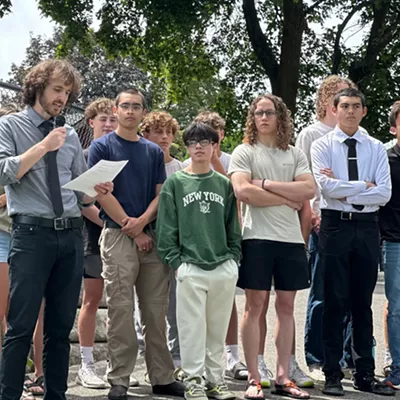The 2003 budget released by the Bush administration in February proposes a new concept for the Forest Service called "charter forests." They would be run "as separate entities, outside of the existing structure and reporting to a local trust entity for oversight."
We've heard of charter schools; do we need charter forests? I think we do. Fifty years ago, the Forest Service was rated the best agency in the federal government. Today, it is one of the most lambasted bureaus in Washington. Its management of the 192-million-acre National Forest System costs taxpayers billions of dollars each year, and according to the independent Government Accounting Office, its accounts would embarrass even Enron. Scientists blame numerous forest health problems on Smokey the Bear's zealous fire-suppression efforts, and the chief of the Forest Service himself recently told Congress that his work force was demoralized.
While everyone agrees the agency is broken, few agree on how to fix it. But charter forests offer promising ideas.
Since forest planning today promotes polarization rather than cooperation, University of Montana Professor Dan Kemmis urges the agency to give more decision-making power to collaborative groups of resource users, environmentalists and other interests. University of California Professor Sally Fairfax thinks the federal government should try operating some of its lands as fiduciary trusts.
My own research traces forest problems to a budgetary process that rewards forest managers for losing money on environmentally destructive activities. We can create better incentives by funding national forests out of their net revenues and dedicating a share of those revenues to non-market resources.
No one knows which ideas will work best, but none of these proposals are mutually exclusive. At least two groups, the Idaho Federal Lands Task Force and the Forest Options Group, have independently proposed to test these ideas.
I've been involved in a group called Forest Options, which includes Sally Fairfax and 20 representatives of environmental groups and resource users, as well as Forest Service officials. It has proposed five different experiments (see www.ti.org/2c.html). Two were versions of collaborative groups, one was a trust and four would test financial arrangements either singly or in combination with one of the other tests.
The more than 100 national forests provide plenty of opportunities for these tests. Two examples: A collaborative board of directors could try to run the contentious Bitterroot National Forest in Montana. The San Juan Forest in western Colorado, focus of a collaborative group now, could be a trust. Administration sources say charter forests allow for such trials. Rather than endorsing any particular model, the administration is providing a wide-open opportunity to test any and all ideas that make sense.
Fifty years ago, many people attributed the Forest Service's success to its decentralized structure. Since then, the agency has become as centralized as any big government bureaucracy. One feature the proposed tests have in common is that they would return authority to the local forest level.
This does not mean that only local residents would make decisions about national forests. All of the proposals -- collaborative groups, trusts and new funding -- could include national as well as local interests and values in the decisions made for each particular forest.
Decentralization doesn't mean excluding national interests. It means replacing one-size-fits-all decisions made in Washington, D.C., with decisions better tailored to each individual forest.
Nor does decentralization mean abandoning protection for endangered species or other environmental resources. While people may debate the best way to protect rare species, no one has proposed to exempt the Forest Service from the Endangered Species Act or other environmental laws.
But decentralization alone will not fix national forest problems. New institutions must build cooperative relationships between Forest Service managers and members of the public. Collaboration, trusts and new funding represent different ways of building these relationships.
Congress should use this new concept to grant the Forest Service broad discretion to explore alternative ways of managing national forests. If these experiments don't work out, we can always end them.
Experiments that work can help improve on-the-ground management, save taxpayers money and relieve controversies not only on the national forests but also on the other 440 million acres of federal resource lands. In short, charter forests promise huge potential benefits without risking any harm.
Randal O'Toole is a contributor to Writers on the Range, a service of High Country News (hcn.org). He is an economist at the Thoreau Institute in Oregon and author of the book, Reforming the Forest Service.















